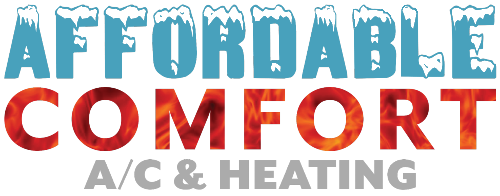The Impact of R22 Phase-Out On Your HVAC System
Refrigerants contribute significantly to the smooth operation of an air conditioner. R22 was the most commonly used refrigerant in residential HVAC units for decades. The Environment Protection Agency (EPA) and the U.S. Department of Energy (DOE) mandated the complete phase-out of R22 with other chemicals when its contribution to the Earth’s ozone layer depletion and global warming came to light in the 1970s. It was classified as a Class II Ozone-depleting substance by the Montreal Protocol, and efforts were made for its systematic phase-out.
The procedure was in progress for a long time. In Jan 2010, EPA banned the use of R22 refrigerants in newly manufactured systems. The process concluded on January 1, 2020, in the country, and now R22, or Freon, is illegal to manufacture and import.
But several homeowners are still unsure of how the R22 phase-out impacts their residential HVAC unit and what they should do about it.
How to know which refrigerant the HVAC system uses?
There is no issue with the new systems installed after 2010. However, for the HVAC systems manufactured or installed before Jan 2010, there is a high probability that they use the R22 refrigerant. To be sure, check the label on the unit. If it mentions R22 or HCFC-22, it means the system uses the phased-out coolant. Call an HVAC contractor for inspection if there is no sticker on the unit or it is indecipherable.
The impact of R22 phase-out on HVAC systems with R22 refrigerant
The ban does not require homeowners to replace or stop using their current system. They can use the stockpiled or recycled R22 refrigerant for servicing. However, the price of R22 refrigerant skyrocketed due to its limited availability. HVAC owners should expect a significant increase in their expenses for recharging their system with the phased-out coolant. With the further decrease in supply, the service cost will also go up.
Therefore, homeowners should invest in professional HVAC preventative maintenance to prevent leaks and save themselves from expensive emergency repairs. A regular tune-up also minimizes the potential environmental damage.
What to do if the HVAC system uses R22 refrigerant?
If the system and its components show no signs of damage or wear and tear and are working efficiently, it is not essential to go for HVAC replacement right away. However, if a breakdown occurs, the choice is to either go for expensive repairs or replace the system.
Another option is to retrofit the existing unit by substituting the R22 refrigerant with the safer and more environmentally friendly R410a refrigerant. It requires some changes to a few refrigerant-dependent system components.
It is essential to keep in mind that not all systems are a candidate for retrofitting, and if not done right, it leads to costly repairs and premature replacements. Retrofitting is a temporary solution, and most HVAC contractors advise against it.
If the current unit is nearing its lifecycle, the more cost-effective and long-term solution is to replace it with a more efficient, feature-rich, and environmentally-friendly system.
Contact an HVAC company for more information on the impact of the R22 phase-out. They can evaluate the current unit and suggest whether to retain or replace it.
Trust locally-owned and operated Affordable Comfort A/C and Heating for HVAC preventative maintenance and thermostat services. Call 602-574-1205 to schedule a consultation.

